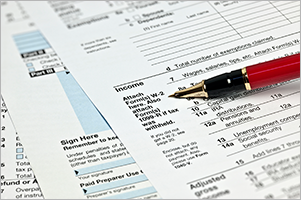October 17
– Filing deadline for extended 2021 individual and C corporation tax returns
Watching summer transform into beautiful fall colors can be just as mesmerizing as tax planning. Similar to looking closely for gorgeous autumn scenery, with tax planning you’re meticulously on the lookout for opportunities to cut your 2022 taxes.
In this month’s newsletter, read about several planning strategies to consider as time is winding down to implement tax cutting measures for 2022.
Also read about ideas to improve your personal cash flow, modern words and their meanings that may be annoying (or not!), and the ingredients of a successful business partnership.
Please feel free to forward the information to someone who may be interested in a topic and call with any questions you may have.
Still Time to Reduce any Tax Surprises!

Consider conducting a final tax planning review now to see if you can still take actions to minimize your taxes this year. Here are some ideas to get you started.
- Review your income. Begin by determining how your income this year will compare to last year. Since tax rates are the same, this is a good initial indicator of your potential tax obligation. However, if your income is rising, more of your income could be subject to a higher tax rate. This higher income could also trigger phaseouts that will prevent you from taking advantage of certain deductions or tax credits formerly available to you.
- Examine life changes. Review any key events over the past year that may have potential tax implications. Here are some common examples:
- Purchasing or selling a home
- Refinancing or adding a new mortgage
- Getting married or divorced
- Incurring large medical expenses
- Changing jobs
- Welcoming a baby
- Identify what tax changes may impact you. Some of the major changes this year include the lowering of the child tax credit and the lowering of dependent care credit for working couples. This year also marks the first year in the last two with no pandemic related payments. If you think this could impact your situation it may make sense to conduct a tax planning review.
- Manage your retirement. One of the best ways to reduce your taxable income is to use tax beneficial retirement programs. So now is a good time to review your retirement account funding options. If you are not taking full advantage of the accounts available to you, there is still time to make adjustments.
- Look into credits. There are a variety of tax credits available to most taxpayers. Spend some time reviewing the most common ones to ensure your tax plan takes advantage of them. Here are some worth reviewing:
- Child Tax Credit
- Earned Income Tax Credit
- Premium Tax Credit
- Adoption Credit
- Elderly and Disabled Credit
- Educational Credits (Lifetime Learning Credit and American Opportunity Tax Credit)
- Avoid surprises. Your goal right now is to try and avoid any unwanted surprises when you file your tax return. It’s also better to identify the need for a review now versus at the end of the year when time is running out. And remember, you are not required to be a tax expert. Use the tips here to determine if a review of your situation is warranted.
Ideas to Improve Your Personal Cash Flow

One of the most common reasons businesses fail is due to lack of proper cash flow. The same is often true in many households. Here’s how this concept of cash flow applies to you along with some ideas to improve it.
Cash flow defined
Cash flow equals cash coming in (wages, interest, Social Security benefits) and cash going out in the bills you pay and money you spend. If more is coming in than going out, you have positive cash flow. If the opposite is true, you have negative cash flow. Unfortunately, calculating and forecasting cash flow can get complicated. Some bills are due weekly, others monthly. A few larger bills may need to be paid quarterly or annually.
Create your cash flow snapshot
Before improving your cash flow, you need to be able to visualize it. While there are software tools to generate a statement of cash flow, you can also take a snapshot of your cash flow by creating a simple monthly spreadsheet:
- Type each month across the top of the spreadsheet with an annual total.
- Note all your revenue (cash inflows), then create a list of expenses (cash outflows) in the left-hand column.
- Enter your income and bills by month. Create a monthly subtotal of all your inflows. Do the same for your cash outflows. Then subtract the expenses from income. Positive numbers? You have positive cash flow. Negative numbers? You have negative cash flow.
- Create a cumulative total for the year under each month to see which months will need additional funds and which months will have excess funds.
Ideas to improve your cash flow
- Identify your challenges. See if you have months where more cash is going out than is coming in to your bank account. This often happens when large bills are due. If possible, try to balance these known high-expense months throughout the course of the year. Common causes are:
- Holidays
- Property tax payments
- Car and homeowners insurance
- Income tax payments
- Vacations
- Build a reserve. If you know there are challenging months, project how much additional cash you will need and begin to save for this in positive cash months.
- Cut back on annuities. See what monthly expense drivers are in your life. Can any of them be reduced? Can you live with fewer cell phone add-ons? How about cutting costs in your cable bill? Is it time for an insurance review?
- Shop your current services. Some of your larger bills may create an opportunity for savings. This is especially true with home and car insurance.
- Create savings habits to add to cash flow. Consider paying a bill to yourself in your cash outflows. This saved money is a simple technique to create positive cash flow each month to build an emergency reserve.
Ingredients of a Successful Business Partnership

Like a bundle of sticks, good business partners support each other and are less likely to crack under strain together than on their own. In fact, companies with multiple owners have a stronger chance of surviving their first five years than sole proprietorships, according to U.S. Small Business Administration data.
Yet sole proprietorships are more common than partnerships, making up more than 70 percent of all businesses. That’s because while good partnerships are strong, they can be a challenge to successfully get off the ground. Here are some of the ingredients that good business partnerships require:
- A shared vision. Business partnerships need a shared vision. If there are differences in vision, make an honest effort to find common ground. If you want to start a restaurant, and your partner envisions a fine dining experience with French cuisine while you want an American bistro, you’re going to be disagreeing over everything from pricing and marketing to hiring and décor.
- Compatible strengths. Different people bring different skills and personalities to a business. There is no stronger glue to hold a business partnership together than when partners need and rely on each other’s abilities. Suppose one person is great at accounting and inventory management, and another is a natural at sales and marketing. Each is free to focus on what they are good at and can appreciate that their partner will pick up the slack in the areas where they are weak.
- Defined roles and limitations. Before going into business, outline who will have what responsibilities. Agree on which things need consensus and which do not. Having this understanding up front will help resolve future disagreements. Outlining the limits of each person’s role not only avoids conflict, it also identifies where you need to hire outside expertise to fulfill a skill gap in your partnership.
- A conflict resolution strategy. Conflict is bound to arise even if the fundamentals of your partnership are strong. Set up a routine for resolving conflicts. Start with a schedule for frequent communication between partners. Allow each person to discuss issues without judgment. If compromise is still difficult after a discussion, it helps to have someone who can be a neutral arbiter, such as a trusted employee or consultant.
- A goal-setting system. Create a system to set individual goals as well as business goals. Regularly meet together and set your goals, the steps needed to achieve them, who needs to take the next action step, and the expected date of completion.
- An exit strategy. It’s often easier to get into business with a partner than to exit when it isn’t working out. Create a buy-sell agreement at the start of your business relationship that outlines how you’ll exit the business and create a fair valuation system to pay the exiting owner. Neither the selling partner nor the buying partner want to feel taken advantage of during an ownership transition.
